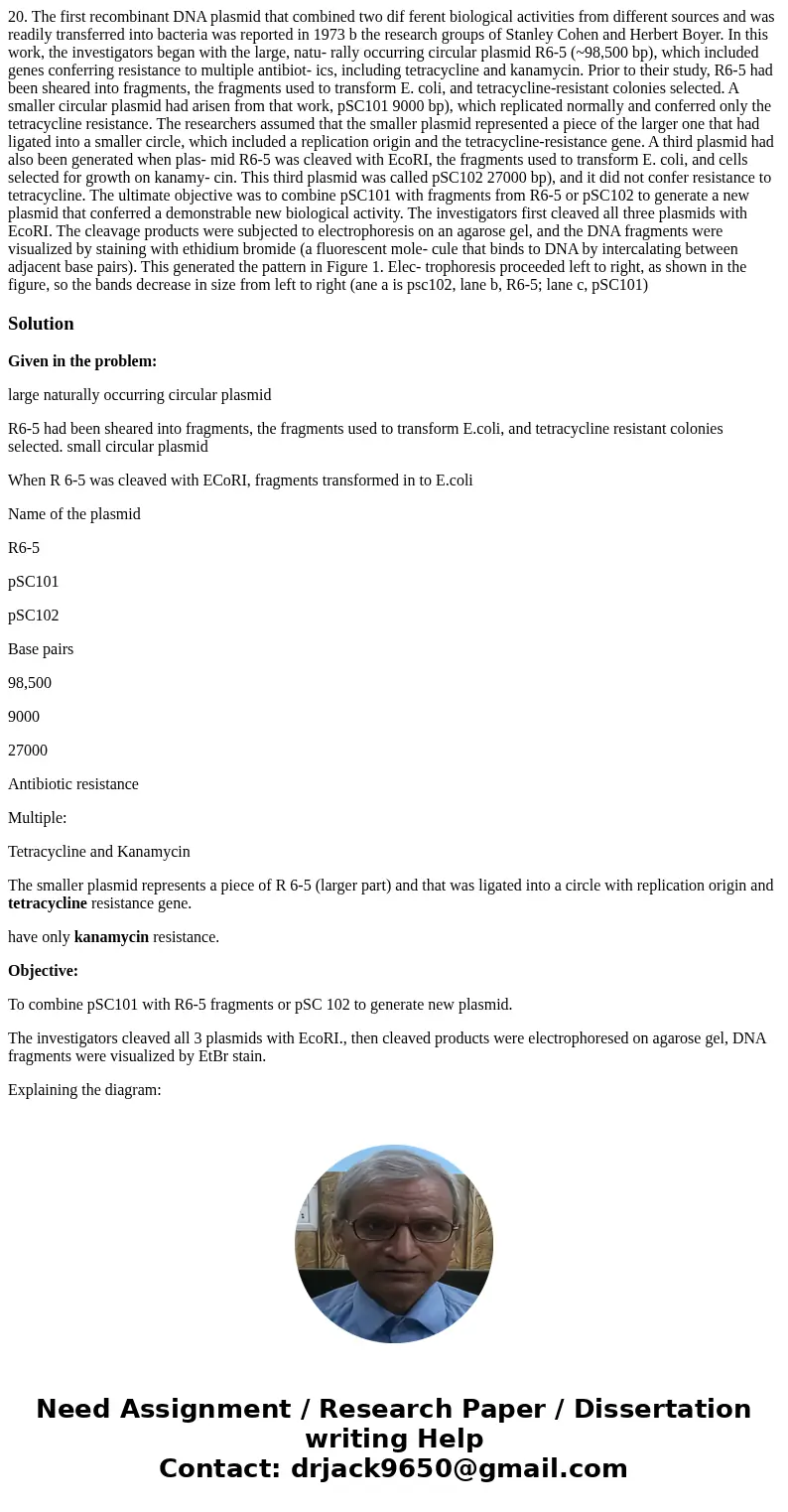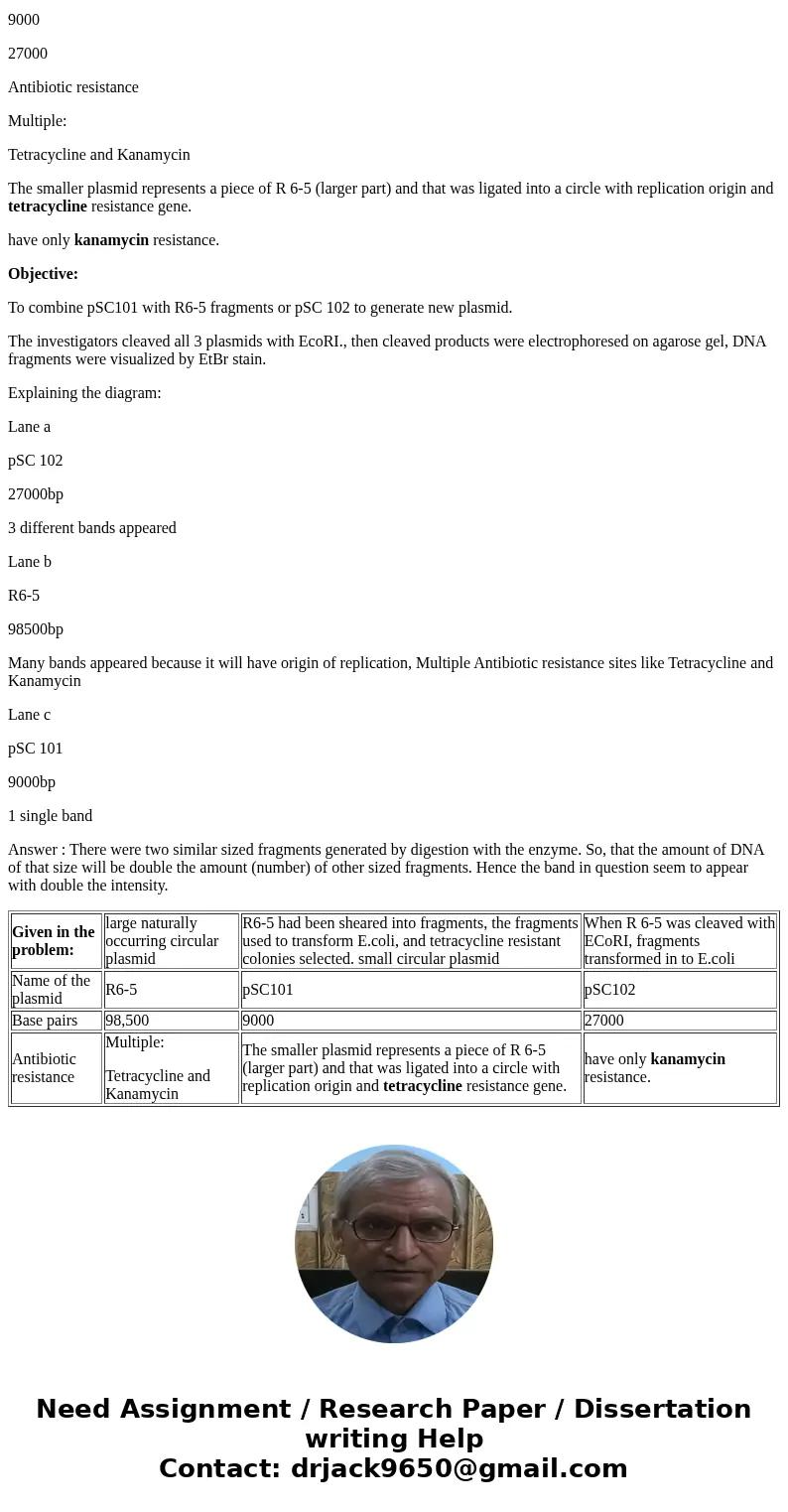20 The first recombinant DNA plasmid that combined two dif f
Solution
Given in the problem:
large naturally occurring circular plasmid
R6-5 had been sheared into fragments, the fragments used to transform E.coli, and tetracycline resistant colonies selected. small circular plasmid
When R 6-5 was cleaved with ECoRI, fragments transformed in to E.coli
Name of the plasmid
R6-5
pSC101
pSC102
Base pairs
98,500
9000
27000
Antibiotic resistance
Multiple:
Tetracycline and Kanamycin
The smaller plasmid represents a piece of R 6-5 (larger part) and that was ligated into a circle with replication origin and tetracycline resistance gene.
have only kanamycin resistance.
Objective:
To combine pSC101 with R6-5 fragments or pSC 102 to generate new plasmid.
The investigators cleaved all 3 plasmids with EcoRI., then cleaved products were electrophoresed on agarose gel, DNA fragments were visualized by EtBr stain.
Explaining the diagram:
Lane a
pSC 102
27000bp
3 different bands appeared
Lane b
R6-5
98500bp
Many bands appeared because it will have origin of replication, Multiple Antibiotic resistance sites like Tetracycline and Kanamycin
Lane c
pSC 101
9000bp
1 single band
Answer : There were two similar sized fragments generated by digestion with the enzyme. So, that the amount of DNA of that size will be double the amount (number) of other sized fragments. Hence the band in question seem to appear with double the intensity.
| Given in the problem: | large naturally occurring circular plasmid | R6-5 had been sheared into fragments, the fragments used to transform E.coli, and tetracycline resistant colonies selected. small circular plasmid | When R 6-5 was cleaved with ECoRI, fragments transformed in to E.coli |
| Name of the plasmid | R6-5 | pSC101 | pSC102 |
| Base pairs | 98,500 | 9000 | 27000 |
| Antibiotic resistance | Multiple: Tetracycline and Kanamycin | The smaller plasmid represents a piece of R 6-5 (larger part) and that was ligated into a circle with replication origin and tetracycline resistance gene. | have only kanamycin resistance. |


 Homework Sourse
Homework Sourse